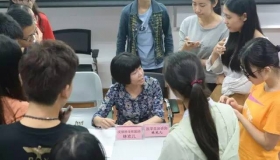7月8日 LHS学术讲座
Topic
Processes on the Emergent Landscapes of Biochemical Reaction Networks, Single-cell Biology, and Heterogeneous Population Dynamics of Tumors
Abstract
Molecular biology is the foundation of life and health sciences. It is based on biochemistry and cell biology. In this talk, I try to give a computational modeling framework for represent biochemical reaction networks and cellular processes. We compare and contrast this paradigm with the classic Newtonian representation for the Nature. The notion of a landscape, with valleys and mountains, has been a widely employed in thinking about dynamics of organisms and biological phenomena, such as in protein folding, differentiation, and Darwinian evolution. However, such a representation has only rigorous foundation for closed biochemical systems such as a protein. Recent advances in mathematical biochemistry and its applications have provided a new basis for such a landscape for open biochemical systems under sustained chemostat. The model is equally applicable to intracellular biochemical regulatory networks within an individual cell and also to tissue dynamics of heterogeneous interacting cell populations.
Biography
Hong QIAN received a B.S. in astrophysics from Peking University and obtained his Ph.D. in biochemistry from Washington University (St. Louis) working on fluorescence correlation spectroscopy (FCS) and single-particle tracking (SPT). His research interests turned to theoretical biophysical chemistry and mathematical biology, studied protein folding and fluctuations, when he was a postdoctoral fellow at the University of Oregon and at the California Institute of Technology. Between 1994 and 1997 he researched the theory of motor proteins and single-molecule biophysics when he was with the Department of Biomathematics at the UCLA School of Medicine. He joint University of Washington (Seattle) in 1997. These earlier work led to his current interest in applications of stochastic dynamics to systems biology. He is a fellow of the American Physical Society, and served and serves on the editorial broads of journals on biophysical chemistry, computational and systems biology. His current research is in stochastic analysis and statistical physics of cellular systems. He coauthored two books: "Chemical Biophysics: Quantitative Analysis of Cellular Systems" with Daniel A. Beard, published by the Cambridge University Press in 2008 and "Mathematical Kinetics Models: Applications in Biophysics and Biochemistry" with Hao Ge, published by the Peking University Press in 2017.




